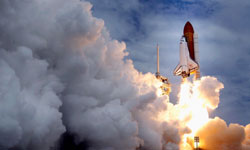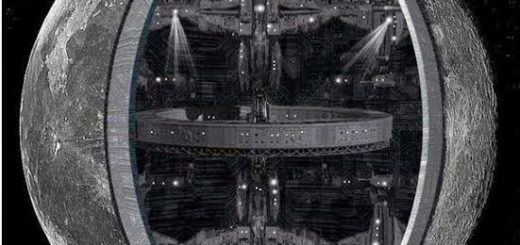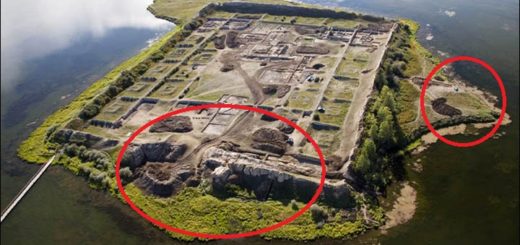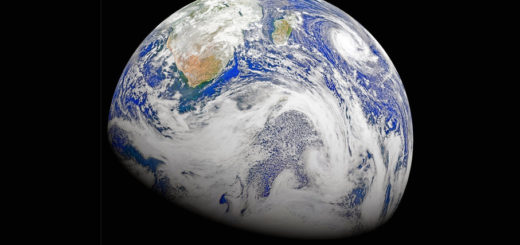5 Post-shuttle NASA Programs

By the time Space Shuttle Atlantis touched down after its final voyage in July 2011, bringing an end to NASA’s 30-year-long space shuttle program, a major shift in the nation’s strategy for space exploration was already underway. NASA’s new plan involves using the fast-developing, private space-launch industry to carry out the low-orbital missions the space shuttles once performed. That approach will allow the U.S. space program to concentrate its efforts and funding on longer-range manned missions and unmanned probes that will venture deeper into the solar system.
In a 2011 speech, NASA Administrator Charles Bolden sketched out some of the details, including the agency’s new Space Launch System, a launch vehicle similar to the Apollo’s Saturn V booster that’ll be the most massive rocket ever built, and the Multi-Purpose Crew Vehicle, a manned spacecraft capable of transporting four astronauts for space missions of up to three weeks in length. In addition to those programs, NASA also plans on a number of other robotic missions, including a quest to find evidence of conditions that would support microbial life on Mars [source: NASA].
What else is up NASA’s sleeve? Here’s a rundown of five of the more interesting new NASA forays into the cosmos.
When the Spirit and Opportunity rovers landed on Mars in 2004, it was one of the most phenomenally successful space exploration missions ever [source: NASA]. The twin robots survived for years beyond their expected lifespan and gathered a treasure trove of knowledge, including evidence that liquid water may have existed fairly recently on the planet’s surface [source: NASA]. Scientists hope that the Curiosity robotic rover, which is scheduled for launch in late November to mid-December 2011, will follow in its predecessors’ illustrious tread marks.
At 10 feet (3 meters) in length, Curiosity is twice as big as the previous rovers, and it carries the most extensive array of scientific instruments ever sent to explore another planet’s surface. Powered by an on-board nuclear generator, the six-wheeled robot is designed to roam between an eighth and a quarter of a mile each day. Its super-high resolution camera, which is capable of capturing details smaller than the width of a human hair, will take extreme close-up photos of rocks, soil and — if it exists — ice on the Martian surface. Another instrument, the ChemCam, will aim a laser beam at Martian rocks and turn them into hot gas, which then can be analyzed by other instruments to determine the rocks’ chemical composition down to the atomic level. The rover’s most important scientific mission is to search for conditions in which microbial life might possibly exist, but it will also measure radiation levels on Mars, a prerequisite for an eventual manned mission [source: NASA].
In August 2011, less than a month after the final shuttle flight touched down, NASA launched Juno, a robotic probe that will venture vastly farther than any human astronaut has ever gone. Named after the Roman goddess who was Jupiter’s spouse, the 11-foot-by-11-foot (3.3-meter-by-3.3-meter) spacecraft will circle the solar system’s biggest planet, following a polar orbit designed to avoid its high-radiation regions.
While other spacecraft have transmitted glimpses of Jupiter, Juno is the first that’ll be able to “see” 30 to 45 miles (48.2 to 72.4 kilometers) through the planet’s dense cloud cover with its infrared camera. Other instruments will map Jupiter’s magnetic and gravitational fields and use microwave radiation to provide data on the structure, chemical composition and movement of Jovian clouds. To take in the optimal amount of data, Juno is designed to rotate twice each minute as it orbits, allowing its instruments to sweep the field of view. The probe’s main purpose is to learn more about how the giant planet formed and evolved, knowledge that will help scientists understand giant planets being discovered around other stars [source: NASA].



 Creators of mankind
Creators of mankind Description of “Tall white aliens”
Description of “Tall white aliens” Where they came from?
Where they came from? About hostile civilizations
About hostile civilizations The war for the Earth
The war for the Earth “Tall white aliens” about eternal life
“Tall white aliens” about eternal life Video: “Nordic aliens”
Video: “Nordic aliens” Aliens
Aliens Alien encounters
Alien encounters The aliens base
The aliens base UFO
UFO Technology UFO
Technology UFO Underground civilization
Underground civilization Ancient alien artifacts
Ancient alien artifacts Military and UFO
Military and UFO Mysteries and hypotheses
Mysteries and hypotheses Scientific facts
Scientific facts


















